Category: Life Sciences
How Discover Magazine Carefully Keeps Readers in the Dark About Intelligent Design
Discover Magazine has a penchant for misleading its readers about intelligent design (ID). Last year it touted Ken Miller’s response to me on Michael Behe’s arguments for irreducible complexity in blood clotting as an “intelligent design fail,” even though Ken Miller had blatantly misrepresented Behe’s arguments. (Miller still hasn’t replied to my refutation of his arguments.) Now, in its October 2010 issue, Discover Magazine was able to combine multiple errors about the nature of ID science and law in one single paragraph. Quite an accomplishment! Here’s the statement:
Does Intelligent Design Help Science Generate New Knowledge?
I was recently asked by an evolutionary biologist where ID can help science generate “new knowledge.” It’s important to realize that when dealing with historical sciences like neo-Darwinian evolution or intelligent design, new knowledge takes the form of both practical insights into the workings of biology in the present day (which can lead to insights into fighting disease), as well as taking the form of new knowledge about biological history and the origin of natural structures. In this regard, I could not disagree more with suggestions that ID closes off inquiry and does not lead to new scientific knowledge. Below are about a dozen or so examples of areas where ID is helping science to generate new knowledge. Each example Read More ›
Regulating DNA Repair Mechanisms
Every once in a while an article comes out on a new DNA repair mechanism or a new feature of a known DNA repair mechanism. There are so many complexities behind DNA repair and there is still more to uncover. Last October, a review article came out in Molecular Cell on regulatory factors for DNA repair mechanisms (Molecular Cell 40(2), October 22, 2010, 179-204). Basically, DNA repair mechanisms are very powerful because they can often replace or remove nucleotide bases. So these powerful mechanisms need something to make sure they do their job properly and not destroy the whole genome in the process. That is where regulators come in. If DNA repair mechanisms are medics flying out to the damaged Read More ›
The Edge of Evolution, as seen by Dave Ussery and BioLogos
In his next installment Professor Ussery complains that I wasn’t enthusiastic enough in my chapter “What Darwinism Can Do.” As an example of common descent I pointed to Baker’s yeast, for which there is good evidence that sometime in the past its genome duplicated. But I also noted that other yeasts with unduplicated genomes have done fine for themselves. The point was that gene or even whole genome duplication is not the powerful tool that Darwinists often claim. That point passed over Dave’s head. His main comment on the book’s next chapter, “What Darwinism Can’t Do” is to tell the reader to search PubMed for the words “cilium” and “evolution.” One gets lots of papers that contain both those words, Read More ›
Response to Edward Max on TalkOrigins Immunity Article
[Editor’s Note: This is the final post in a six-part a series from microbiologist Donald L. Ewert, where he argues that the processes used by our immune system to generate antibodies are anything but “random,” and do not serve as an example of Darwinian evolution. Other posts in this rebuttal can be found at: Part One, Part Two, Part Three, and Part Four, and Part Five. In the first five posts, Dr. Ewert responded to Kathryn Applegate of the BioLogos Foundation. In this sixth post, he responds to similar arguments from Edward Max at TalkOrgins that antibody generation is “evolution in miniature.”] One of the goals of Edwards Max’s post at TalkOrigins is to refute a narrow claim of “creationists” Read More ›

